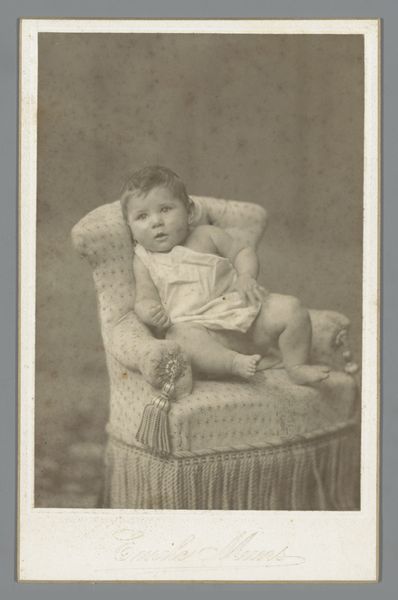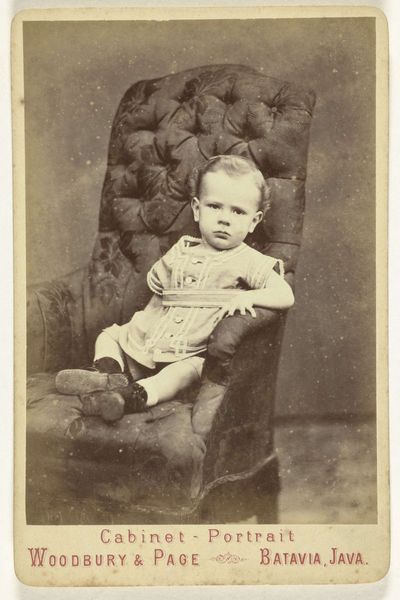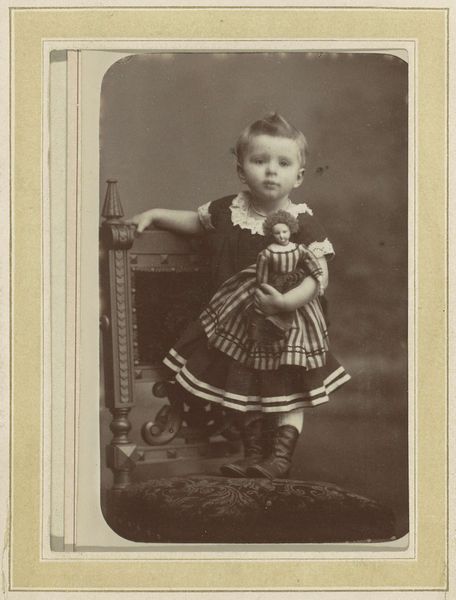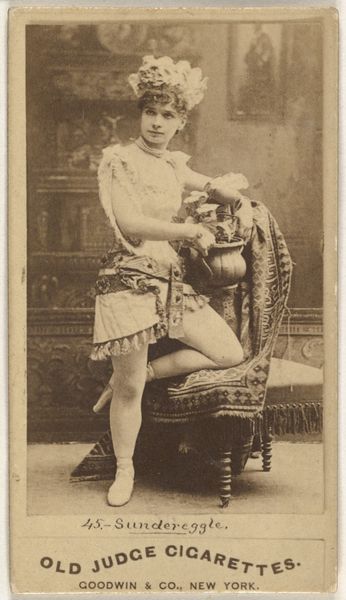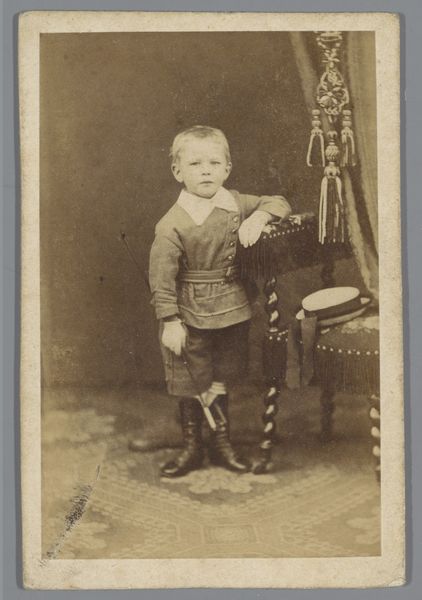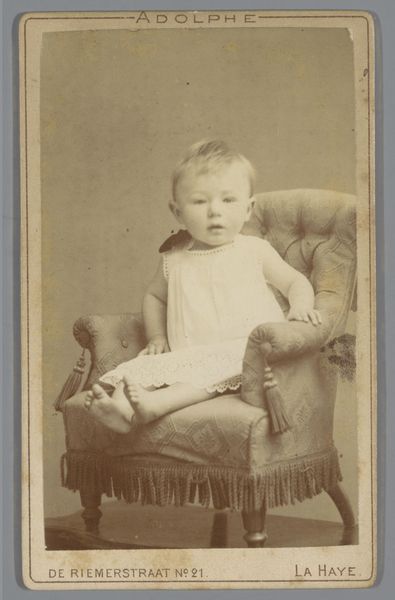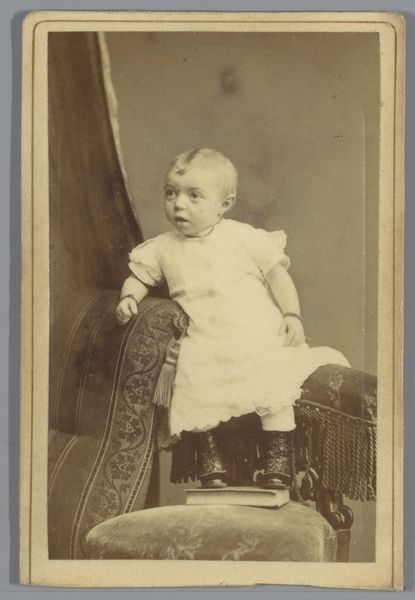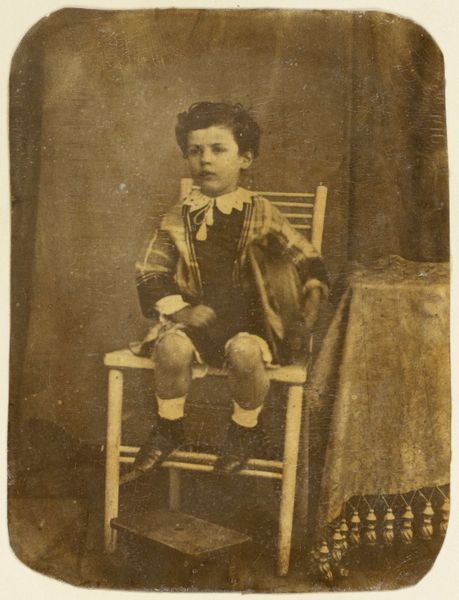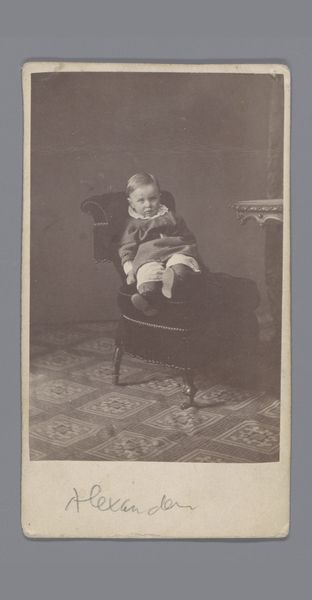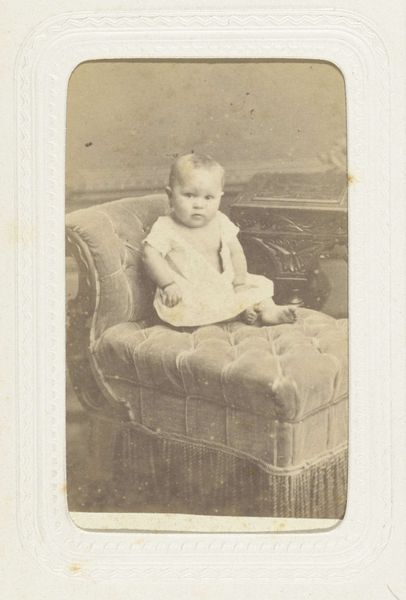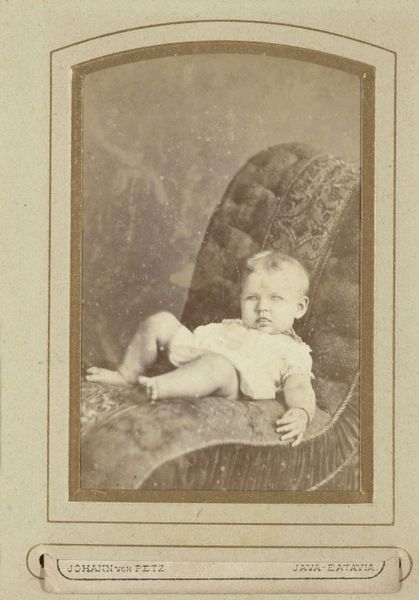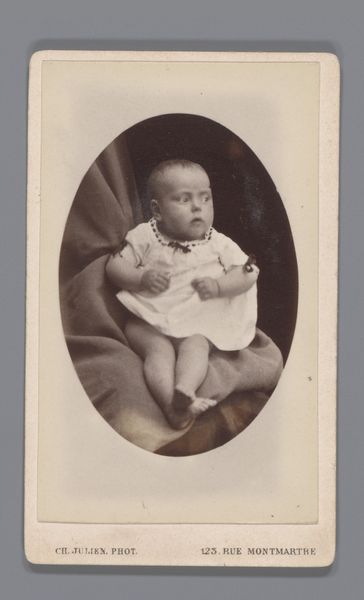![Untitled [portrait of an unidentified boy acrobat] by Jeremiah Gurney](/_next/image?url=https%3A%2F%2Fd2w8kbdekdi1gv.cloudfront.net%2FeyJidWNrZXQiOiAiYXJ0ZXJhLWltYWdlcy1idWNrZXQiLCAia2V5IjogImFydHdvcmtzL2UzNjFiYTQ4LWY3NWQtNDc5NS1hODI2LWFlMWVkNWJjYTdlYS9lMzYxYmE0OC1mNzVkLTQ3OTUtYTgyNi1hZTFlZDViY2E3ZWFfZnVsbC5qcGciLCAiZWRpdHMiOiB7InJlc2l6ZSI6IHsid2lkdGgiOiAxOTIwLCAiaGVpZ2h0IjogMTkyMCwgImZpdCI6ICJpbnNpZGUifX19&w=3840&q=75)
Untitled [portrait of an unidentified boy acrobat] 1869 - 1874
0:00
0:00
photography, gelatin-silver-print
#
portrait
#
figuration
#
archive photography
#
photography
#
historical photography
#
gelatin-silver-print
#
19th century
#
academic-art
Dimensions: 3 11/16 x 2 1/4 in. (9.37 x 5.72 cm) (image)4 1/16 x 2 7/16 in. (10.32 x 6.19 cm) (mount)
Copyright: Public Domain
This photograph, captured by Jeremiah Gurney, portrays an unidentified boy acrobat, a testament to the spectacle of performance in the late 19th century. Here, the curtain in the background and the boy's attire allude to a theatre stage. The subject’s pose, with a hand firmly placed on the hip, echos the contrapposto stance seen in classical sculpture, and in this way, seeks to elevate the status of the subject. The figure of the acrobat, in various guises, has long captured our collective imagination. From the tumblers of ancient Greece, immortalized on vases, to the court jesters of medieval times, the acrobat embodies a dual existence: strength and vulnerability. In this image, the acrobat is frozen in time; a psychological tension that resonates through the ages. We are reminded of the fleeting nature of performance, the ephemerality of the moment. This image is not just a portrait, but a poignant commentary on the human condition.
Comments
minneapolisinstituteofart almost 2 years ago
⋮
An important part of New York City-based photographer Jeremiah Gurney’s business was making small-size portrait photographs. Beginning in the 1850s, cartes de visite (calling cards, or visiting cards) photographs were popular. They were often made with a four-lensed camera, capturing four of the same image at once. They were printed eight on a sheet and each photograph was mounted on a thick cardboard paper sized 2.5 in. by 4 in. Cartes de visite were shared among families and friends, and mostly were stored in photographic albums. However, by the early 1880s, cartes de visite were replaced by larger cartes de imperiale (cabinet card), also albumen prints, mounted on cardboard backs measuring 4.5 in. by 6.5 in. Because of their size, cartes de imperiale would have been visible from across the room. As such, they were often displayed using frames and small stands.
Join the conversation
Join millions of artists and users on Artera today and experience the ultimate creative platform.

